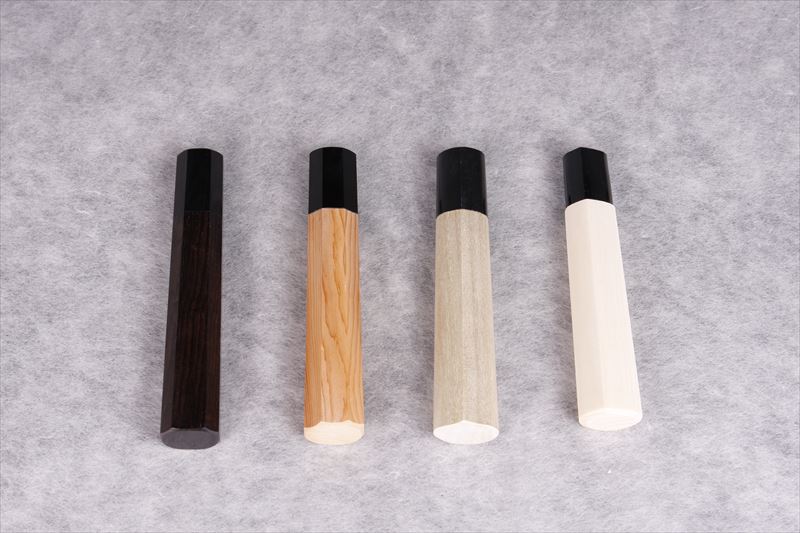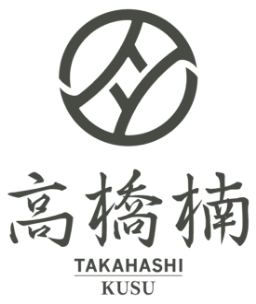Knife Blog
Archive
Search within Knife blog
Japanese knife handles
11/05/2016Sakai Knives

Today, I write about Japanese knife handles.
When we create a Japanese-style knife, we heat tang of a knife with fire and insert it into a handle. This way of creating a knife and the fact that ferrule contracts by little and little make blades properly fix in handles.
The shapes of handles are ellipse, chestnut shape, and octagon. Generally, ellipse handles are used for Deba knives and chestnut shape handles are used for Yanagi and Usuba knives. Octagon handles are a little more expensive and some professional shaves prefer this shape because an octagon handle fits comfortably in their hands.
Ferrules of most handles are plastic or buffalo horn.
Plastic handles are mostly made of plastic and poplar trees. Plastic handles are cheapest handles.
Buffalo horn handles are mostly made of buffalo horn and Magnolia obovata tree. Magnolia obovata is light, hard to be broken, and resistant to water. Even if we have Magnolia obovata with wet hand, it is not slip. Magnolia obovata is comparatively soft, so the more often we use it, the more comfortably it fits in our hand. Buffalo horn is more expensive than plastic handles.
Other than these two handles, there is stainless-steel handle. This ferrule is stainless-steel and the color is silver. Stainless-steel handles are mostly made of stainless-steel and poplar trees.
One of the most expensive handles are made of buffalo horn and ebony tree. This tree is the hardest and the most resistant to water among all handles. These handles are mostly used for expensive blades. There is ebony handles with silver, but the number of craftsmen who can make ebony handles is decreasing, so they are tough to get.
Other than the handles I have mentioned above, there are Taxus cuspidata handles and Zelkova serrata handles whose colors are orange and yellow. They are very rare.
Recently, some knife wholesalers use handles all parts of which are made of trees without plastic or buffalo horn. Since the colors of these types handles can be changed more easily, they can be more fashionable.
*On the picture, the handle on the left is the ebony handle, the 2nd handle from the left is the Taxus cuspidata handle, the 2nd handle from the right is the Magnolia obovata handle, and the handle on the right is the plastic handle. Other than the plastic handle, the ferrules of three handles are buffalo horns.


